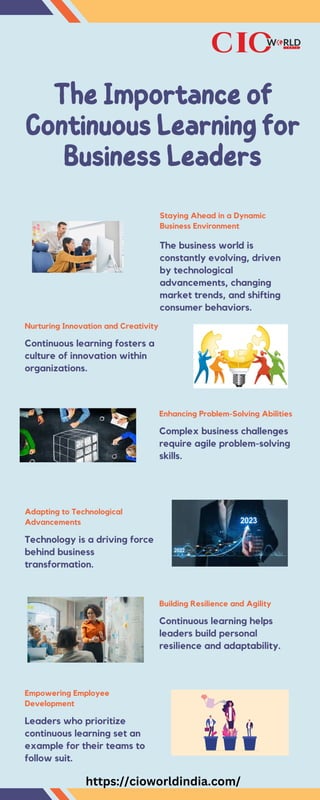

Continuous learning is crucial for small business owners to navigate the ever-evolving market and stay competitive. Imagine a world where your business isn’t just surviving, but thriving. Continuous learning provides the key for this. It’s not just about acquiring new knowledge, but also about adapting your approach and growing with the times. Many small business owners struggle to balance daily operations with personal development and learning. They lack the time, resources, or the clear direction for learning. This article will provide practical strategies to overcome these challenges. We’ll cover topics such as identifying learning needs, creating a personalized learning plan, finding effective resources, and leveraging your learning to drive business growth and innovation. We’ll also explore various real-world examples and offer proven strategies for success.
Identifying Your Learning Needs
Assessing Knowledge Gaps
Understanding where your knowledge gaps lie is the first step toward effective continuous learning. Small business owners often juggle multiple responsibilities, making it hard to dedicate time to self-improvement. This is where strategic analysis and self-reflection come into play. One effective method is to conduct a SWOT analysis on your current skills. A SWOT analysis, which assesses Strengths, Weaknesses, Opportunities, and Threats, allows a thorough self-assessment. Consider what roles or tasks within the business you are less confident with. Are there skills you feel you could improve, particularly in marketing, finance, or technology. Consider the future needs of your industry and any potential emerging technologies or tools that you may need to incorporate.
Identifying Specific Learning Goals
Once knowledge gaps are identified, translate these into specific, measurable, achievable, relevant, and time-bound (SMART) learning goals. Instead of just saying “I want to improve my marketing,” set a specific goal like “I will learn to create engaging social media content within the next 3 months.” By making learning goals precise, you can more effectively track your progress and stay motivated. Document your goals clearly so you have a consistent roadmap for ongoing growth.
Crafting a Personalized Learning Plan
Setting Realistic Goals
A well-defined learning plan is essential for maintaining consistent progress. Don’t try to learn everything at once! Focus on achievable goals that align with your business objectives and personal interests. A balanced approach that combines learning with your daily business tasks is ideal. Starting with small, manageable steps is key to avoid feeling overwhelmed. Focus on one skill at a time and aim for gradual improvements rather than drastic transformations. Remember, continuous learning is a journey, not a destination.
Finding Resources that Fit Your Needs
Look for resources that cater to your learning style and preferences. Consider various learning methods such as online courses, workshops, podcasts, books, or industry events. Explore online learning platforms that offer structured programs or on-demand courses relevant to your business needs. Networking with other entrepreneurs in your field can provide invaluable insights and support. Connect with local business groups or industry associations for opportunities to learn and collaborate.
Leveraging Your Learning for Business Growth
Applying New Knowledge to Operations
Once you’ve gained new knowledge and skills, actively apply them to your business operations. Experiment with new approaches in marketing campaigns or service delivery. Don’t be afraid to try new things or approach problems from different angles. Implement changes in small increments and track the outcomes. This hands-on approach allows you to fine-tune your strategies and see what works best for your specific business. Don’t hesitate to seek input and advice from trusted mentors or advisors to make sure you’re on the right track.
Fostering a Culture of Learning
Encourage continuous learning within your team. Create a learning environment that encourages curiosity and innovation. Establish a clear process for onboarding new employees and offer opportunities for professional development within your company. This might include training programs, mentoring opportunities, or access to online learning resources. Encourage a growth mindset throughout your team, recognizing that continuous learning is an ongoing process for everyone involved.
The Importance of Adaptability
Staying Updated on Industry Trends
Business environments are constantly changing. In today’s fast-paced world, understanding and adapting to changing industry trends is paramount to success. Stay informed about emerging technologies, industry best practices, and economic shifts. Join relevant online forums and communities to stay abreast of new insights and developments. Regularly review industry publications and reports for in-depth information. Understanding recent changes and implementing adjustments is key to staying ahead of the curve.
Adapting Your Business Strategies
Using your newly acquired knowledge and understanding of emerging trends, adapt your business strategies accordingly. Are there new tools or technologies that could benefit your business? How can you improve efficiency and customer satisfaction by applying what you’ve learned? Think outside the box, and be flexible and adaptable when needed. Experiment with new strategies and approaches, and be prepared to pivot if necessary.
Measuring Success and Evaluating Progress
Tracking Key Performance Indicators
Use key performance indicators (KPIs) to track your progress and measure the effectiveness of your continuous learning initiatives. Assess metrics that align with your business objectives. Are sales increasing? Are customer satisfaction scores improving? Tracking these crucial numbers provides a clear picture of the impact your learning and development have on the bottom line. This will help you make informed decisions about future learning strategies.
Making Adjustments to Your Learning Plan
Based on your findings and measurements, identify areas where you need to adjust your learning plan and strategy. Are your initial goals still relevant? Are there new learning needs that have emerged? Make adjustments to your strategy to address these and keep it relevant for ongoing success.
In conclusion, continuous learning is not just a desirable trait for small business owners; it’s a necessity for sustained success in today’s dynamic market. By embracing new knowledge, adapting to industry trends, and consistently improving skills, small business owners can gain a competitive edge, foster innovation, and ultimately drive their businesses towards profitable growth. The insights shared in this article offer practical steps to implement continuous learning strategies. Embark on this journey of continuous learning today, and unlock your business’s full potential. Start by identifying specific knowledge gaps and establishing a learning plan that resonates with your business goals. Don’t be afraid to seek mentorship, attend workshops, or leverage online resources. Continuous learning is an investment that pays off immensely, ensuring your small business thrives for years to come.